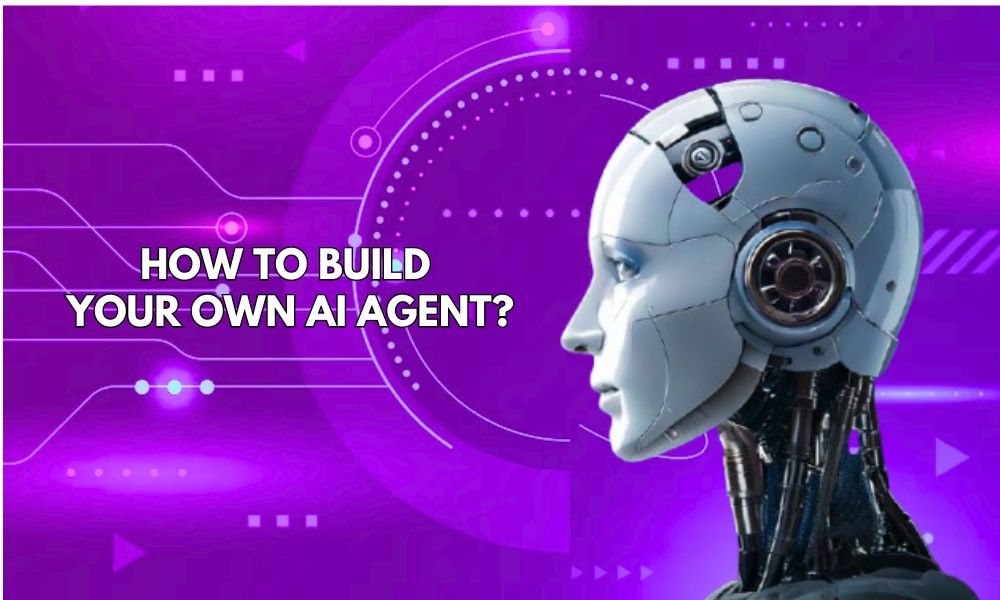Have you ever dreamed of creating an intelligent virtual assistant, your own ai agent, to automate tasks or serve personal purposes? Building your own ai agent is no longer a distant dream with today’s technological advancements. This article will provide an overview and the essential steps for you to embark on this exciting journey, helping you craft your own ai agent effectively.

Contents
Why should you build your own ai agent?
Building your own ai agent offers several significant benefits:
High customization: You can design the agent to precisely fit your specific needs and goals, something off-the-shelf solutions often struggle to fully meet. Every individual or business has unique requirements.
Learning and skill development: This is an excellent opportunity to learn more about artificial intelligence, machine learning (ML), natural language processing (NLP), and related technologies. The building process will help you solidify theoretical knowledge and practice your skills.
Solving unique problems: You can create agents that solve specific problems for which no effective tools yet exist, or optimize existing processes in your own way.
Innovation potential: Building it yourself encourages creativity and can lead to new breakthroughs and AI applications you hadn’t previously considered.
Data control: When you build it yourself, you have full control over the input data and how the agent processes information, ensuring privacy and security if needed, especially when dealing with your own ai agent.
Necessary knowledge and tools
To embark on the journey of building your own ai agent, you need to prepare some foundational knowledge and familiarize yourself with supporting tools:
- Programming languages: Python is the most popular choice due to its rich ecosystem of AI/ML libraries (e.g., TensorFlow, PyTorch, Scikit-learn, LangChain). Other languages like Java or C++ can also be used depending on the specific project requirements and personal preference.
- Understanding of AI and machine learning (ML): A solid grasp of basic concepts like machine learning algorithms, neural networks, reinforcement learning, and natural language processing (NLP) will be very helpful. You don’t necessarily need to be an expert, but a basic understanding will help you choose appropriate methods.
- APIs and integration: Skills in working with APIs (Application Programming Interfaces) for the agent to interact with external services and data are crucial. For example, using APIs of large language models (LLMs) or other web services.
- Development environment: A good code editor like Visual Studio Code (VS Code) and knowledge of version control systems like Git for efficient source code management.
- Specialized frameworks and libraries: Frameworks like LangChain simplify building LLM-based applications, including creating your own ai agent.
Steps to build your own ai agent
Step 1: Define goals and scope:
The first and most crucial step is to clearly define the purpose of your AI agent. What will it do? What problem will it solve? Who is the target user? For example: a customer support chatbot, an agent to automate data entry from invoices, or an agent that analyzes market data and provides recommendations. Clearly defining the scope will help you focus resources and prevent the project from becoming overly complex.
Step 2: Choose technology and architecture:
Based on the defined goals, you will select appropriate technologies and architecture.
- If the agent is simple and rule-based, you might only need Python and standard libraries.
- If the agent needs learning and adaptation capabilities, you’ll need machine learning libraries like Scikit-learn, TensorFlow, or PyTorch.
- For agents interacting with natural language, NLP libraries like NLTK, SpaCy, or integration with large language models (LLMs) via API (e.g., OpenAI API) or open-source models (e.g., from Hugging Face) will be necessary. Frameworks like LangChain are very popular for building LLM-based applications, making it easier to create a powerful version of your own ai agent.
Step 3: Collect and prepare data:
If your own ai agent uses machine learning, data is key. You need to collect data relevant to the agent’s task. This data needs to be cleaned, preprocessed (e.g., normalized, noise removed), and possibly labeled. The quality of the input data will directly affect the agent’s performance.
Step 4: Develop core logic and/or train the model:
This is where you write the code for the agent’s “brain.”
- For rule-based agents: Build if-then-else logic flows, decision trees, or simple expert systems.
- For machine learning-based agents: Select appropriate algorithms (e.g., regression, classification, clustering), train the model on the prepared data, and fine-tune model parameters for optimal performance.
- For agents using LLMs: Design effective prompts, integrate with LLM APIs, and potentially fine-tune the LLM on your own data if needed to increase specificity for your own ai agent.
Step 5: Build the interaction interface (sensors and actuators):
The AI agent needs a way to receive information from the environment (sensors) and perform actions (actuators). This interface could be:
- A command-line interface (CLI).
- A graphical user interface (GUI) on the web or desktop.
- An API for other systems or applications to interact with.
- Integration with popular messaging apps (e.g., Discord, Slack, Telegram).
Step 6: Test and iterate:
After building the first version of your own ai agent, thorough testing is crucial. Find bugs, evaluate performance based on predefined metrics, gather feedback from beta users (if any), and iterate on the development process to improve the agent. This is an ongoing process with no endpoint.
Step 7: Deploy (if needed):
If you want your AI agent to be used by others or operate 24/7, you need to deploy it to a server or cloud platform (e.g., Amazon Web Services – AWS, Google Cloud Platform – GCP, Microsoft Azure).
Some ideas for your own ai agent
- Personal chatbot: Answer frequently asked questions, schedule appointments, provide information on demand.
- Task automation agent: Automatically send template-based emails, organize files on your computer, enter data from fixed sources.
- Sentiment analysis agent: Analyze text from social media, emails, or product reviews to determine positive, negative, or neutral sentiment.
- Content summarization agent: Automatically generate summaries for long articles, research papers, or meetings.
Challenges and considerations
When building your own ai agent, you may encounter some challenges:
- Complexity of AI: Advanced AI models can be difficult to understand and implement if you are just starting.
- Data issues: Lack of high-quality data or bias in data can affect the agent’s decisions.
- Ethics and security: Ensuring the agent operates responsibly, does no harm, and protects user data.
- Maintenance and updates: AI technology evolves rapidly, so the AI agent needs to be monitored, maintained, and updated regularly to remain effective.
Embark on building your own ai agent – a rewarding path to mastering AI and automation. These skills are vital. For continued learning, expert guides, and to successfully create your own ai agent, follow Best Trading Bot for the latest tech insights and support on your journey.
